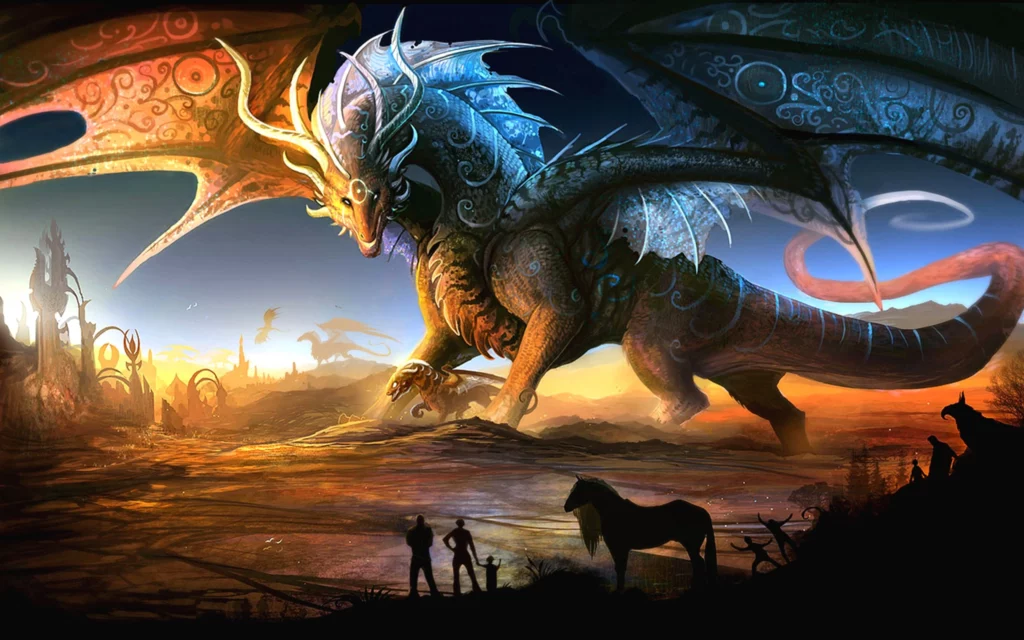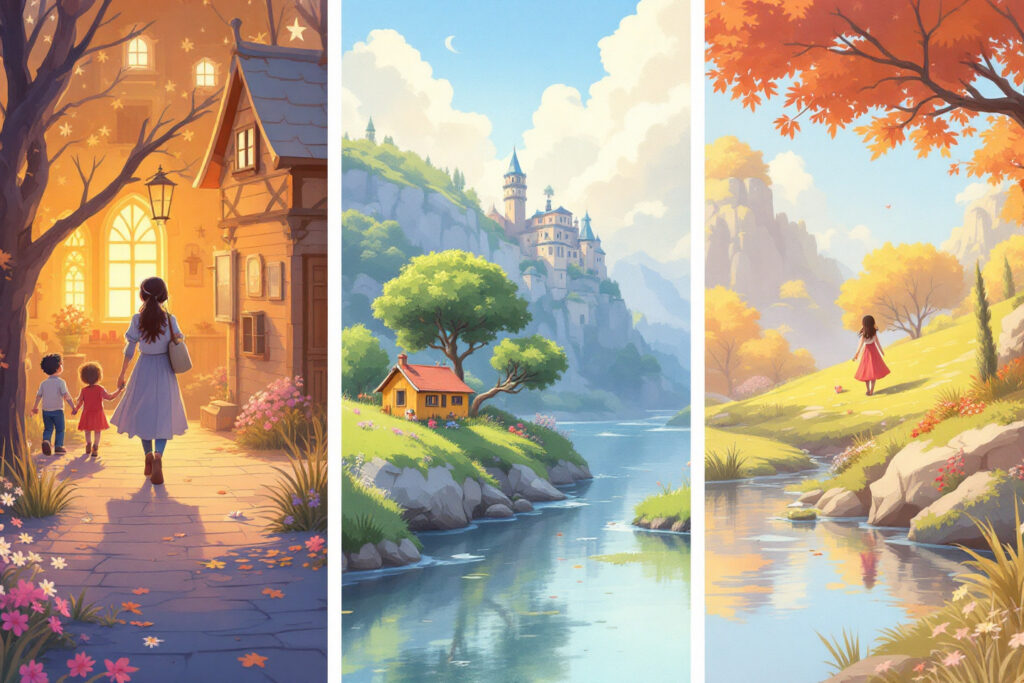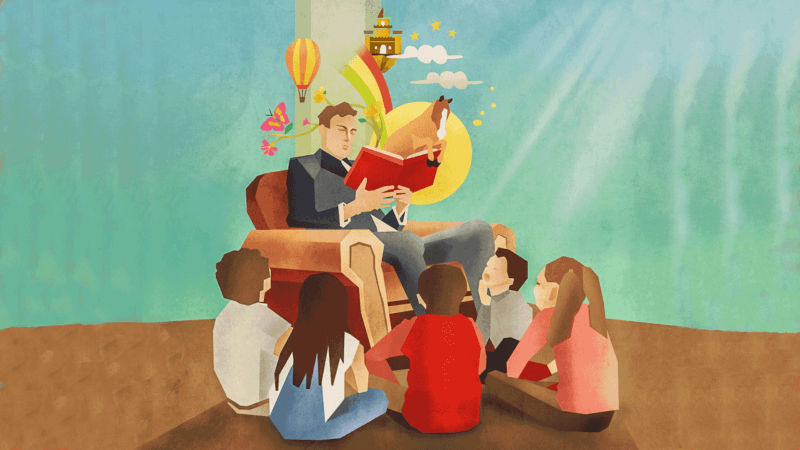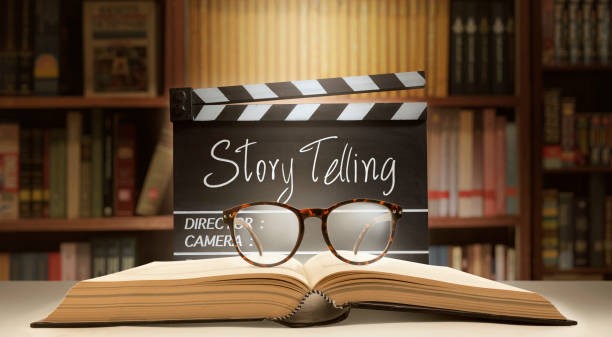CREATIVE WRITING

Creative writing is like being the boss of your own world, where you can make anything happen—whether it’s an epic adventure, a wild mystery, or even a funny story that makes people laugh. Imagine your mind is a magic box, and when you write, you’re pulling out ideas that no one else has ever seen before. You get to create characters who could be anything, like superheroes or secret agents, or maybe a talking dog who solves crimes.
In this lesson, you will dive into creative writing genres such as Narrative, Poetry, and Scriptwriting. You will also learn why creative writing appeals to people of all ages. Let’s dive into it!
The Appeal of Creative Writing
Creative writing is like playing pretend, but with words. You can make a dragon fly through your school hallways, or maybe a monster becomes friends with the main character instead of scaring them. The best part? There are no rules except the ones you make. Whether you’re writing about a world that’s totally made-up or something that could really happen, creative writing is all about expressing what’s in your imagination and bringing it to life.
The best part is that there’s no right or wrong way to do it. The more you let your imagination run wild, the better your stories can get. So, if you like playing games, watching movies, or even dreaming up your own ideas, creative writing is just another way to have fun and explore the worlds inside your head. Plus, it can help you discover your voice and maybe even inspire others to write their own stories. Cool, right?

Narrative Writing
Alright, imagine you’re telling your friends about the most insane day of your life. You could tell them in so many ways, right? You could give them every tiny detail and go on and on, or you could just zoom in on the most exciting part and skip all the boring stuff. That’s narrative style in a nutshell—it’s how you choose to tell a story!
In writing, narrative style is like your personal storytelling flavor. It’s the voice, tone, and point of view you use to guide the reader through your story. It’s how you decide to show what’s happening, what characters are feeling, and why everything matters. There are a bunch of different ways to narrate a story—kind of like how you can tell a story like an action-packed movie, a deep mystery, or even like you’re sharing a juicy gossip session.

Here are some cool examples of how narrative style can change a story:
- First-Person Narrative – “I walked into the room, and my heart raced. I knew something was wrong.”
- You’re inside the character’s head. It’s like you’re the main character, and everything you see, feel, and experience is filtered through your eyes.
- Third-Person Limited Narrative – “He walked into the room, his heart racing. He could feel something was wrong.”
- Here, you’re not in the character’s head, but you’re still following them around closely. You know what’s happening to them, but you don’t get to hear their inner thoughts directly.
- Omniscient Narrative – “He walked into the room, and she saw the worry in his eyes. Little did they know, their lives were about to change forever.”
- This is like having a bird’s-eye view of everything. You know everything—what every character is thinking, feeling, and doing. It’s like being the all-knowing narrator of the story.
- Stream of Consciousness – “I walked into the room, and wait, is that a shadow? Is it getting darker? What’s that noise? Oh, my heart is pounding, why am I nervous? Focus!”
- This style makes it seem like you’re hearing the random, scattered thoughts of the characters as they happen, all jumbled together. It’s super chaotic but also gives you a real feeling of being inside someone’s mind.

Why use narrative writing?
It’s like choosing your superpower as a writer! Want to make your readers feel like they’re running along with the characters? Try a fast-paced, action-packed first-person style. Want to keep some mystery? Use the third-person and reveal things bit by bit. Narrative style gives you the power to control how the story unfolds and how much your reader knows.
It’s your story—you decide how to tell it. And that’s what makes narrative style such a cool tool in creative writing.
Poetry Writing
Writing poetry is like being an artist with words. You’re not just telling a story; you’re painting pictures, making sounds, and feeling emotions with the coolest language tricks. It’s like putting your feelings, thoughts, or experiences into a tiny, magical world made of words.

Now, poetry isn’t just about rhyming (although that’s fun too!). It’s about style—how you play with words and use them to create something unique. Here are some cool poetry styles to check out:
1. Free Verse
Imagine you’re running wild, with no rules or boundaries. That’s what free verse poetry is! You write without worrying about rhymes or a specific rhythm. It’s all about expressing your thoughts however you want, in whatever shape or length feels right.
Example:
I don’t need rules to tell me
how to feel the wind,
how the trees sway like they’re dancing
and the sky is full of secrets.
2. Rhymed Poetry
This is the type you might think of when you hear “poetry”—the classic kind where lines rhyme. It’s like a catchy song, where each line flows into the next, and you get to play around with sound, rhythm, and rhyme.
Example:
The moon shines bright,
A star’s soft light,
The night is calm,
The world feels right.
3. Haiku
This is a short but powerful style of poetry that comes from Japan. It’s all about capturing a moment in nature, but it only uses 3 lines with a specific syllable pattern: 5 syllables in the first line, 7 in the second, and 5 in the third. It’s a fun challenge!
Example:
Clouds drift in the sky,
The breeze whispers through the trees,
A bird flies so high.
4. Spoken Word/Performance Poetry
This one is all about performance. It’s like writing a poem with the power to be spoken out loud, full of emotion, rhythm, and sometimes even attitude. You perform it with your voice and body. It’s like writing a script that comes alive when you say it out loud.
Example:
(Spoken dramatically)
I am not what you see—
I am a storm of thoughts,
I am the sound of a heart breaking,
I am the silence after the storm!
5. Limericks
Limericks are funny, bouncy little poems with a specific rhythm and rhyme scheme (AABBA). They often tell silly or unexpected stories and are a lot of fun to write.
Example:
There once was a cat from Peru,
Who wore a bright pink tutu,
She danced on the roof,
In a crazy hoof-to-hoof,
And everyone shouted, “Woo-hoo!”
6. Acrostic Poems
In an acrostic, you write a word vertically (like your name or a favorite thing), and then each letter starts a line of the poem. It’s like spelling out your feelings!
Example (using the word “LOVE”):
Laughter fills the air,
Over fields of gold,
Vibrations of the heart,
Endless and bold.

Why use poetry as a creative writing tool?
Poetry gives you the freedom to express yourself in whatever crazy or cool way you want. You get to pick your style, decide how you want it to sound, and even break all the rules. It’s like painting with words, and there are no limits to your creativity! Whether you want to be deep, funny, or mysterious, poetry is your playground to explore and experiment.
So, next time you’re feeling something—happy, sad, confused, or excited—try writing a poem. You never know, it might just turn into your favorite way to express yourself!
Scriptwriting

Scriptwriting is like creating a movie or TV show with words! Imagine you’re the director, writer, and actor all in one. Instead of describing everything like in a regular story, you write what people say (dialogue) and do (actions), like a blueprint for the film.
Scripts have their own style because they focus on what’s seen and heard. You write character names in big letters, then the dialogue they say, and you describe what’s happening in the scene.
It’s like giving someone a recipe for making your story come alive on screen—just without the food! You decide how the characters move, what they say, and even the sound effects or music. Cool, right?
Example:
INT. COFFEE SHOP – DAY
JAMES
(awkwardly while opening the bedroom’s creaking door)
So… what’s the deal with your new job?
LUCY
(smiling)
It’s perfect. I’m actually excited about Mondays!

Why use scriptwriting?
Because you get to create the story, but leave it up to others to bring it to life—whether it’s on stage, film, or even online! It’s all about making the words pop off the page!
Learning Activities
Superhero Story Creation
- Create your own superhero (or villain) with unique powers and backstory. What’s their secret identity? Do they have a sidekick? What’s their arch-nemesis like?
- Write a short story where your superhero faces a big challenge. What happens in the end? Do they win, or does the villain have a surprise up their sleeve?
Character Speed Round
- Write down 10 random words (like pizza, monster, mystery, skateboard, space) on slips of paper. Now, randomly pick two or three words and create a character based on them.
- Next, write a short story introducing this new character. You can go wild—maybe your character is a pizza delivery guy who secretly saves the world from aliens, or a skateboarding detective solving a mystery!
Twist Ending Challenge
- Write a short story, but leave the ending blank. Then, come up with three possible endings, and write them all out. Pick the most surprising or unexpected twist!
- Share your twist ending with a classmate and see if they can guess what’s coming before you reveal it!
Post-Apocalyptic Playlist
- Create a playlist of 5-10 songs that make you think of a post-apocalyptic world (zombies, aliens, or a dystopian future). Listen to the playlist while you write a story about surviving in that world.
- Write a scene where the character is navigating this world, dealing with danger or unexpected challenges. You can use the music as inspiration for the mood and pacing of your story.
